
International Journal of Electrochemical Science
Scope & Guideline
Empowering researchers to shape the future of electrochemistry.
Introduction
Aims and Scopes
- Electrochemical Energy Storage:
Research on batteries, supercapacitors, and fuel cells, focusing on materials such as lithium-ion, sodium-ion, and zinc-ion technologies, with an emphasis on improving efficiency, capacity, and cycling stability. - Corrosion Science and Inhibition:
Studies investigating the mechanisms of corrosion in various environments, the development of corrosion inhibitors, and methods for assessing corrosion resistance in metals and alloys. - Electrochemical Sensors and Biosensors:
The journal publishes work on the design, fabrication, and application of electrochemical sensors for detecting various analytes, including biomolecules, pollutants, and industrial chemicals, utilizing advanced nanomaterials and novel sensing strategies. - Electrocatalysis and Photocatalysis:
Papers explore the development of electrocatalysts for energy conversion reactions such as hydrogen evolution and carbon dioxide reduction, as well as photocatalytic materials for environmental remediation. - Nanomaterials in Electrochemistry:
Research focusing on the synthesis, characterization, and application of nanostructured materials in electrochemical systems to enhance performance and functionality. - Machine Learning and Data Analysis in Electrochemistry:
Studies that utilize machine learning techniques to analyze electrochemical data, predict performance, and optimize electrochemical processes.
Trending and Emerging
- Sustainable and Green Electrochemistry:
Research focusing on eco-friendly materials and processes, including the use of natural extracts as corrosion inhibitors and sustainable approaches to energy storage and conversion. - Advanced Nanomaterials:
The use of nanomaterials in electrochemical applications is on the rise, with a focus on their unique properties for enhancing the performance of sensors, batteries, and catalysts. - Electrochemical Water Treatment:
Emerging studies on the use of electrochemical methods for wastewater treatment, including advanced oxidation processes and pollutant degradation, are gaining attention as sustainability becomes a priority. - Smart and Wearable Electrochemical Sensors:
The development of miniaturized, flexible, and wearable sensors for real-time monitoring of health parameters and environmental pollutants is a rapidly growing area, driven by advancements in materials science. - Artificial Intelligence in Electrochemistry:
The application of machine learning and artificial intelligence to optimize electrochemical processes, analyze data, and predict outcomes is becoming increasingly prominent, representing a significant trend in the field.
Declining or Waning
- Traditional Corrosion Studies:
Research focused solely on traditional corrosion mechanisms without the integration of modern computational tools or eco-friendly inhibitors is becoming less common as the field shifts towards more innovative, sustainable approaches. - Basic Electrochemical Theory:
Papers centered around basic electrochemical theory without application to current technological advancements or practical applications are less frequently published, as the emphasis moves towards applied research. - Conventional Battery Technologies:
Research on conventional battery technologies that do not incorporate novel materials or innovative designs is declining, as there is a strong push towards exploring new battery chemistries and architectures. - Single-Use Electrochemical Sensors:
The interest in single-use sensors is decreasing as more emphasis is placed on developing reusable and multifunctional sensor platforms that can provide more comprehensive data.
Similar Journals

npj Materials Degradation
Enhancing Knowledge in Materials Sciencenpj Materials Degradation is a premier open-access journal published by NATURE PORTFOLIO that has rapidly established itself in the field of materials science since its inception in 2017. With its focus on the degradation processes affecting materials and their applications, this journal is essential for researchers and professionals seeking to advance their understanding of the longevity and sustainability of materials. The journal boasts an impressive impact, classified in the top quartile (Q1) of categories such as Ceramics and Composites, Materials Chemistry, and miscellaneous areas of Chemistry and Materials Science, as evidenced by its Scopus rankings where it ranks #17 in Chemistry (miscellaneous) and #27 in Ceramics and Composites. With open access options allowing for a broader dissemination of research findings, npj Materials Degradation serves as a vital platform for the dissemination of innovative research and interdisciplinary collaboration, enhancing the collective knowledge in the ever-evolving landscape of materials engineering and science.
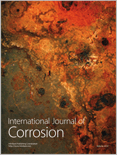
International Journal of Corrosion
Empowering Knowledge Exchange in Corrosion ScienceInternational Journal of Corrosion is a distinguished peer-reviewed journal published by HINDAWI LTD, focusing on the critical field of corrosion research, a vital aspect of materials science and chemical engineering. Since becoming an Open Access journal in 2010, it has provided a platform for disseminating pivotal findings related to corrosion mechanisms, prevention strategies, and innovative materials designed to counteract corrosion, thus directly impacting industries ranging from construction to energy. The journal boasts a respectable impact reflected in its Scopus rankings, holding a Q3 quartile in both Materials Science and Process Chemistry and Technology, with commendable rankings of #157 out of 463 and #37 out of 73, respectively. By fostering knowledge exchange and collaboration among researchers, professionals, and students, the International Journal of Corrosion plays an essential role in advancing the understanding of corrosion phenomena, thereby contributing significantly to the development of more resilient materials and sustainable engineering practices.
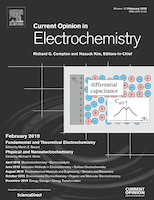
Current Opinion in Electrochemistry
Inspiring Breakthroughs in Electrochemical ResearchCurrent Opinion in Electrochemistry, published by Elsevier, stands at the forefront of research in the fields of Analytical Chemistry and Electrochemistry. With an impressive Impact Factor reflected in its Q1 quartile rankings for both categories, this journal holds a significant place among its peers, ranking 9th in Analytical Chemistry and 8th in Electrochemistry according to Scopus metrics. Launched in 2017, it has rapidly become a vital platform for the dissemination of cutting-edge insights, reviews, and critical assessments that shape the future directions of electrochemical research and applications. As researchers, professionals, and students engage with its content, they find not only a repository of knowledge but also a source of inspiration for innovative experiments and applications. Readers can explore the wealth of information this journal provides to stay updated with contemporary trends and emerging technologies in electrochemistry. With a commitment to high-quality scholarly content, Current Opinion in Electrochemistry is your essential guide to the evolving landscape of electrochemical science.

Electrochemical Science Advances
Empowering Scientists through Open Access InsightsElectrochemical Science Advances, published by WILEY, is an esteemed Open Access journal that has been making significant contributions to the field of electrochemistry since its inception in 2021. With an ISSN of 2698-5977, this journal serves as a vital platform for researchers and practitioners looking to disseminate their findings on a diverse range of topics within the electrochemical sciences and related areas. The journal has achieved commendable rankings in the Scopus database, placing it in the 2nd quartile in Chemistry (miscellaneous) and the 3rd quartile in Electrochemistry, highlighting its relevance and growing influence in the academic community. As it converges from 2021 to 2024, Electrochemical Science Advances aims to foster collaboration and innovation, offering a vital resource for students, professionals, and researchers dedicated to advancing knowledge and technology in electrochemistry. Access to this cutting-edge research is straightforward, allowing for a comprehensive engagement with the latest advances in the field.
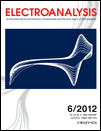
ELECTROANALYSIS
Innovating Analytical Techniques for a Sustainable FutureELECTROANALYSIS is a premier journal published by WILEY-V C H VERLAG GMBH that serves the dynamic field of analytical and electrochemistry. Established in 1989, this scholarly publication has successfully converged its focus to cover a wide array of topics including novel electrochemical methods, sensor technology, and environmental analysis, reflecting the latest advancements and trends in the field. With an impressive 2023 impact factor that places it in the Q2 quartile of Analytical Chemistry and Q3 quartile in Electrochemistry, the journal is recognized for its high-quality research and contributions. Its Scopus rankings further reinforce its credibility, standing at #46/156 in Analytical Chemistry and #26/60 in Electrochemistry. Although currently not offering Open Access, the journal remains a significant resource for researchers, professionals, and students keen to stay at the forefront of electroanalytical techniques. With a global readership, ELECTROANALYSIS continues to drive knowledge and innovation within the scientific community.

JOURNAL OF SOLID STATE ELECTROCHEMISTRY
Exploring Innovative Pathways in Energy SystemsThe Journal of Solid State Electrochemistry is a leading peer-reviewed journal dedicated to advancing the understanding and application of solid-state electrochemical systems. Published by Springer, this prestigious journal has been a staple in the field since its establishment in 1997, with an impressive range of topics covering Condensed Matter Physics, Electrochemistry, and Materials Science. It holds a notable Q2 category quartile ranking in several disciplines, including Electrical and Electronic Engineering, and boasts significant Scopus rankings—ranked #28 in Electrochemistry, showcasing its credibility and impact in the field. With a mission to disseminate high-quality research and innovative methodologies, the journal aims to foster cross-disciplinary collaboration among researchers, professionals, and students. While not open access, articles published in the Journal of Solid State Electrochemistry are integral for those exploring cutting-edge technologies through theoretical and practical approaches, ultimately enhancing our understanding of energy systems and materials' performance. Located in Germany, the journal continues to thrive internationally, providing a robust platform for scholarly communication.
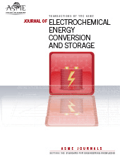
Journal of Electrochemical Energy Conversion and Storage
Transforming Energy Storage and ConversionThe Journal of Electrochemical Energy Conversion and Storage, published by ASME, is a premier platform for cutting-edge research in the fields of electrochemistry, energy engineering, and materials science. With an ISSN of 2381-6872 and an E-ISSN of 2381-6910, this journal aims to disseminate high-quality articles that contribute to the understanding and application of energy conversion and storage technologies. Notably recognized in the 2023 Category Quartiles as Q2 in multiple categories including Electronic, Optical and Magnetic Materials, Energy Engineering and Power Technology, and Mechanical Engineering, it reflects a strong academic impact within its field. The journal also boasts competitive Scopus rankings, highlighting its relevance and influence across disciplines. Operating under an open access model, the journal ensures that research findings are widely accessible, fostering collaboration and innovation among researchers, professionals, and students globally. As we move toward a more sustainable future, the Journal of Electrochemical Energy Conversion and Storage plays a critical role in advancing technologies that promise to reshape how we harness and utilize energy.

Tungsten
Advancing the frontiers of tungsten research.Tungsten, published by SpringerNature, is a prestigious academic journal dedicated to advancing the field of materials science with a specific focus on tungsten and its diverse applications. Launched in 2019, the journal has quickly established itself as a leading resource in its domain, achieving a remarkable Q1 ranking across multiple categories including Materials Chemistry, Materials Science (miscellaneous), Metals and Alloys, and Surfaces, Coatings and Films. With robust performance reflected in its Scopus rankings—holding significant positions such as rank #20 in Metals and Alloys (88th percentile)—Tungsten serves as a vital platform for researchers and professionals seeking to disseminate innovative findings and foster collaboration in the materials science community. Although not an Open Access publication, this journal offers a well-curated collection of high-quality research articles, reviews, and technical notes aimed at driving forward the understanding and application of tungsten in various scientific sectors. Operating out of the United States, Tungsten is committed to providing an essential resource for academia and industry alike, making a significant contribution to the evolving landscape of materials research.

International Journal of Electrochemistry
Unlocking the potential of electrochemical systems for a sustainable future.The International Journal of Electrochemistry, published by HINDAWI LTD, serves as a premier outlet for cutting-edge research in the expansive field of electrochemistry. With an ISSN of 2090-3529 and an E-ISSN of 2090-3537, this open-access journal has been contributing to the advancement of scientific knowledge since 2011, making its content freely available to researchers, industry professionals, and students around the globe. The journal aims to foster innovation by disseminating high-quality research articles, reviews, and technical notes that encompass a wide range of topics from fundamental electrochemical principles to practical applications in energy storage, sensors, and material development. With a focus on promoting interdisciplinary collaboration and advancing the understanding of electrochemical systems, the International Journal of Electrochemistry is a vital resource for anyone involved in electrochemical research and its applications.
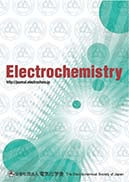
ELECTROCHEMISTRY
Connecting Global Minds in Electrochemical TechnologyELECTROCHEMISTRY is an esteemed journal published by the Electrochemical Society of Japan, dedicated to advancing the field of electrochemical science and technology. With an ISSN of 1344-3542 and an E-ISSN of 2186-2451, this journal has been providing a platform for scholarly communication since its inception in 1996, with a converged scope extending to 2024. As an Open Access publication since 2020, it facilitates the wide dissemination of research, fostering collaboration among researchers, professionals, and students alike. Currently positioned in Q3 of the electrochemistry category and ranking 52 out of 60 in Scopus, ELECTROCHEMISTRY is committed to publishing high-quality, peer-reviewed articles that explore novel electrochemical systems, applications, and methodologies. With its base in Tokyo, Japan, the journal serves a global audience, promoting cutting-edge research that drives innovation in energy, materials science, and analytical chemistry.